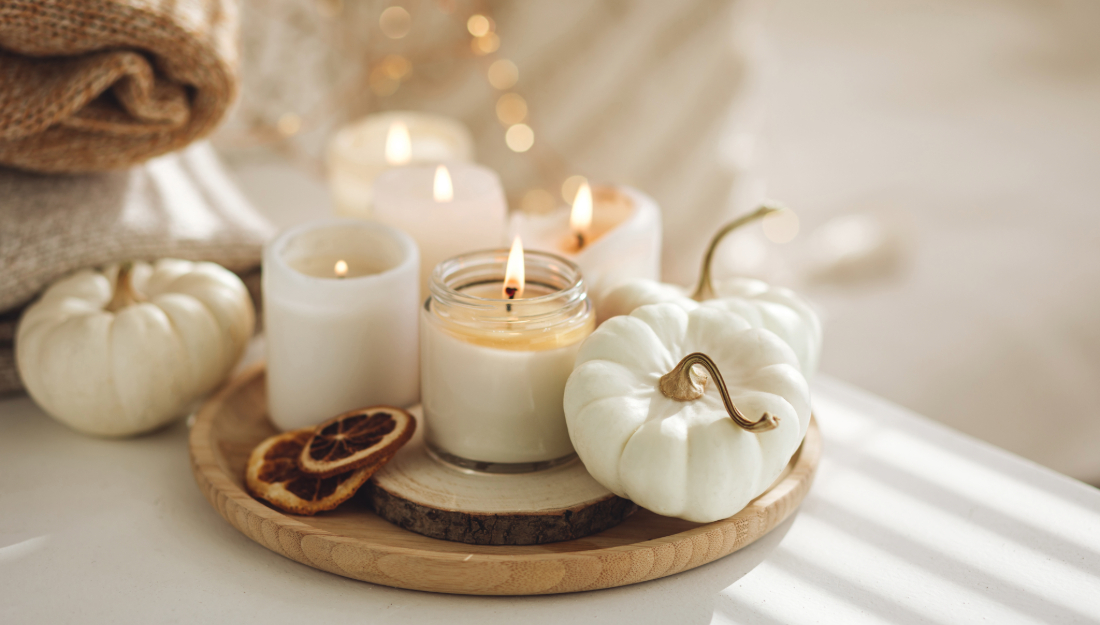- Lasha Markham
- Health Tips, Healthy Living, Public Health, Show on VR homepage
Are your holiday candles making you sick?
Scented candles can contribute to indoor pollution, but an asthma specialist gives some advice for equally festive alternatives

Scented candles made from natural waxes are safer than those made from petroleum-based paraffin wax. (Adobe Stock)
Every November, the streets shimmer with lights, pies are baking, and homes begin smelling like joy. But could some of those cozy scents be impacting your health? Genny Carrillo, MD, ScD, a professor at the Texas A&M University School of Public Health who has dedicated many years to researching asthma and indoor air pollutants , says candles and other seasonal fragrances may be harming our overall health.
“Our houses have a lot of indoor pollution, and it’s important to know about it because we spend about 90 percent of our time indoors,” she said.
Indoor pollution can be especially problematic for people with respiratory conditions like asthma. If someone in your household is at risk, Carrillo recommends investing in an air monitor to help identify potential hazards in your home’s air. Look for a monitor that measures the most common indoor air pollutants—carbon dioxide, fine particulate matter (PM2.5) and volatile organic compounds (VOCs). Some monitors may also measure temperature, humidity, air pressure, carbon monoxide (CO), nitrogen dioxide (NO2) and ozone.
If no one in your household has asthma or another respiratory condition, Carrillo says there’s no need to continually monitor your home’s air. However, keeping the air in your home clean can still alleviate general allergies and promote the overall health and well-being of your family.
What’s in the air?
The root cause of most air quality issues from candles and other scented products is chemicals. Items containing dyes or fragrances can release harmful compounds into the air, and burning these chemicals, as with candles, exacerbates the issue.
One potentially harmful substance is paraffin wax, which originates from petroleum and emits fumes when burned. Although the U.S. government has declared that paraffin wax originating from the United States is safe for human health, Carrillo points out that vulnerable individuals—such as young children, older adults and those with asthma—may still be at risk from the toxins it contains.
Similarly, while lead was banned in 2003 for candle manufacturing in the United States, imported candles may not meet the same standards and could still contain lead. Carrillo also advises caution with plug-in air fresheners, which may release some of the same harmful toxins, such as VOCs.
Better alternatives for a healthier home
Don’t worry—you can still enjoy a pleasantly scented home without compromising your health. Carrillo recommends trying your hand at making your own scented candles so you know what is in them.
“It’s not difficult,” she said. “There’s wax from coconut, from palm and from honeybees that you can get, and you can buy non-toxic wicks and find additives that are very safe.” These natural waxes might cost a bit more, but they typically burn longer and Carrillo notes that you’ll end up paying less for your health in the long run.
Other alternatives to scented candles include simmering fragrant items like cinnamon sticks, apples, citrus or vanilla beans on the stove. You can also bake cookies or bread, or even simply open the windows to allow for fresh air exchange. “There are many ways to make your home feel festive during the holidays without filling the air with pollutants,” Carrillo said.
This season, as laughter fills your home and food is passed down the table, it’s important to consider the impact of scented products on air quality and overall health. Opting for natural, non-chemical alternatives can create a festive atmosphere without the potential health risks of conventional scented products. By making mindful choices, we can enjoy a cozy, inviting home that’s also safer for everyone, particularly vulnerable groups like young children, seniors and those with respiratory issues.
“We always want to minimize risk to vulnerable populations,” Carrillo said. “So, if we can find a way to do that, we should do everything we can to balance wanting a homey atmosphere with safety for those people.”
Media contact: media@tamu.edu


